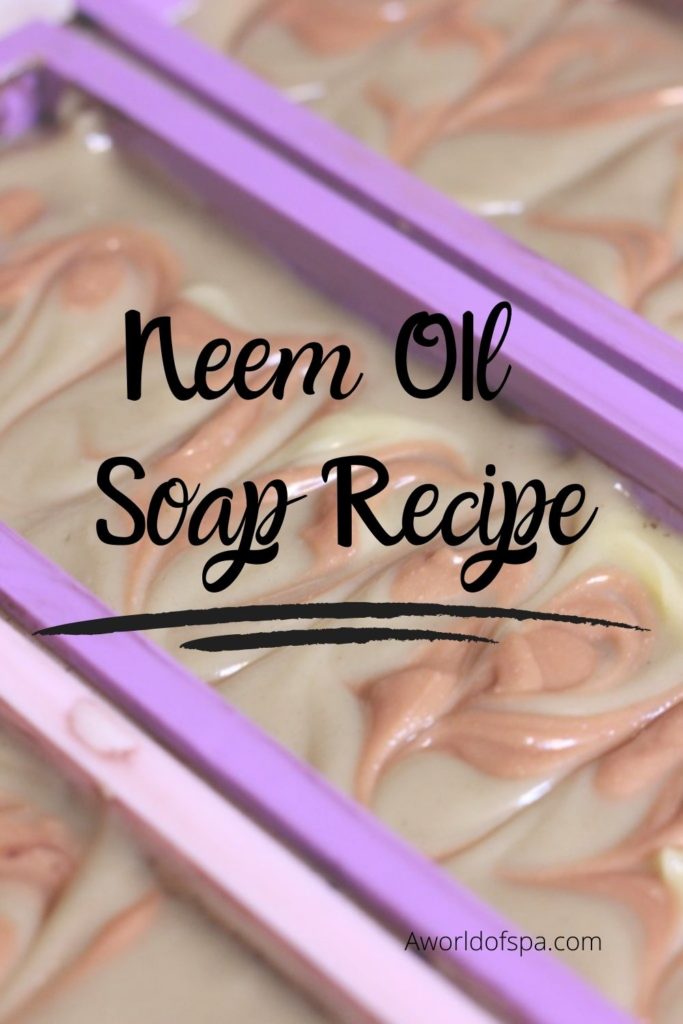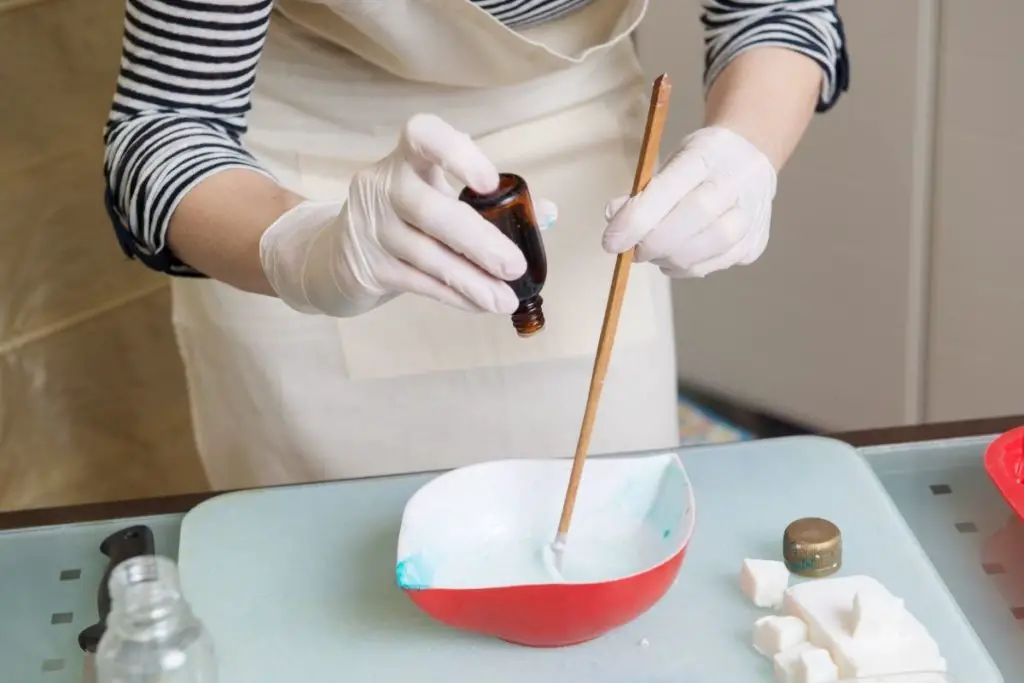
Neem oil, one of the most important ingredients in Ayurveda traditional medicine, used in many fields, from organic agriculture to cosmetics. Our Neem Oil Soap Recipe
Neem Oil is an oil obtained from the pressed fruits and seeds of the neem.
The neem, or Azadirachta indica, is an Indian tree introduced in most of the tropicale climates countries around the world, mostly used in organic farming.
In fact, the oil is a powerful biopesticide, able to eliminate only the pests and not the garden friendly insects like butterflies and bees.
The use of neem oil originated in India, it is very popular in ayurveda traditional medicine, and in Chinese traditional medicine.
Nowadays it is an important ingredient in cosmetic products such as body lotions, creams, hair masks and soaps.
Here you’ll find our neem oil soap recipe!
This recipe is for around 5 soap bars (90 g each) with 6% Superfat (not saponified fats)
DIY: Neem Oil Soap Recipe

Disclosure: Some of our articles contain affiliate links (as an Amazon affiliate I earn from qualifying purchases).
Ingredients
- Sodium hydroxide (caustic soda, NaOH) 55 g
- Water 144 g
- Olive oil 200 g
- Coconut oil 120 g
- Shea butter 60 g
- Neem Oil 20 g
- Neem powder 10 g
- Reetha powder (soap nut) 5g
- Hibiscus powder 5g
- Castor oil 3g
- Vanilla essential oil 2g
- Eucalyptus essential oil 1g
Procedure

- Weigh separately the sodium hydroxide (in a small dry container) and water (in the pyrex beaker)
- Slowly pour the sodium hydroxide into the water in a well ventilated place and mix with the whisk until the sodium hydroxide is completely dissolved (this solution is called lye). Be careful, as this will become quite hot while dissolving! Set aside to cool down.
- Weigh the solid fats (coconut oil and shea butter) and slowly melt them in the cooking pot over low heat.
- Weigh the olive and neem oil in the plastic bowl.
- Weigh neem powder in a small container and reetha and hibiscus powders in another container.
- Weigh essential oils.
- Pour the melted fats into the olive oil, mix well and check the temperature.
- When the temperatures of the oil mixture and of the lye both reach 35-50°C (ideally 40°C) pour the sodium hydroxide solution into the oils and start blending with short bursts.
- When the mixture reaches a homogeneous and slightly creamy texture (trace), it means that the saponification reaction has started.
- Separate the mixture into two parts and add the neem powder in one part and reetha and hibiscus powder in another part. Blend both separately.
- Pour first part (with neem powder) and then slowly pour the second part (with reetha and hibiscus powders) on top.
- Cover the mould and leave to rest for 24-48 hours.
- When the soap feels solid enough, unmould it and cut it into pieces as you like.
- Place the soaps in a dark, well ventilated area to cure for at least 4 weeks.
Extra Tips

Please be extra careful when handling sodium hydroxide (caustic soda, NaOH), as it is a very alkaline (basic) ingredient and can cause burns on your skin. Wear gloves during all the making process.
There is no sodium hydroxide left in the final product, when the saponification process is finished.
We hope you enjoy our recipe and please contact us if you have any questions.
Interested in How to Make Soap at Home? Have a look at:







